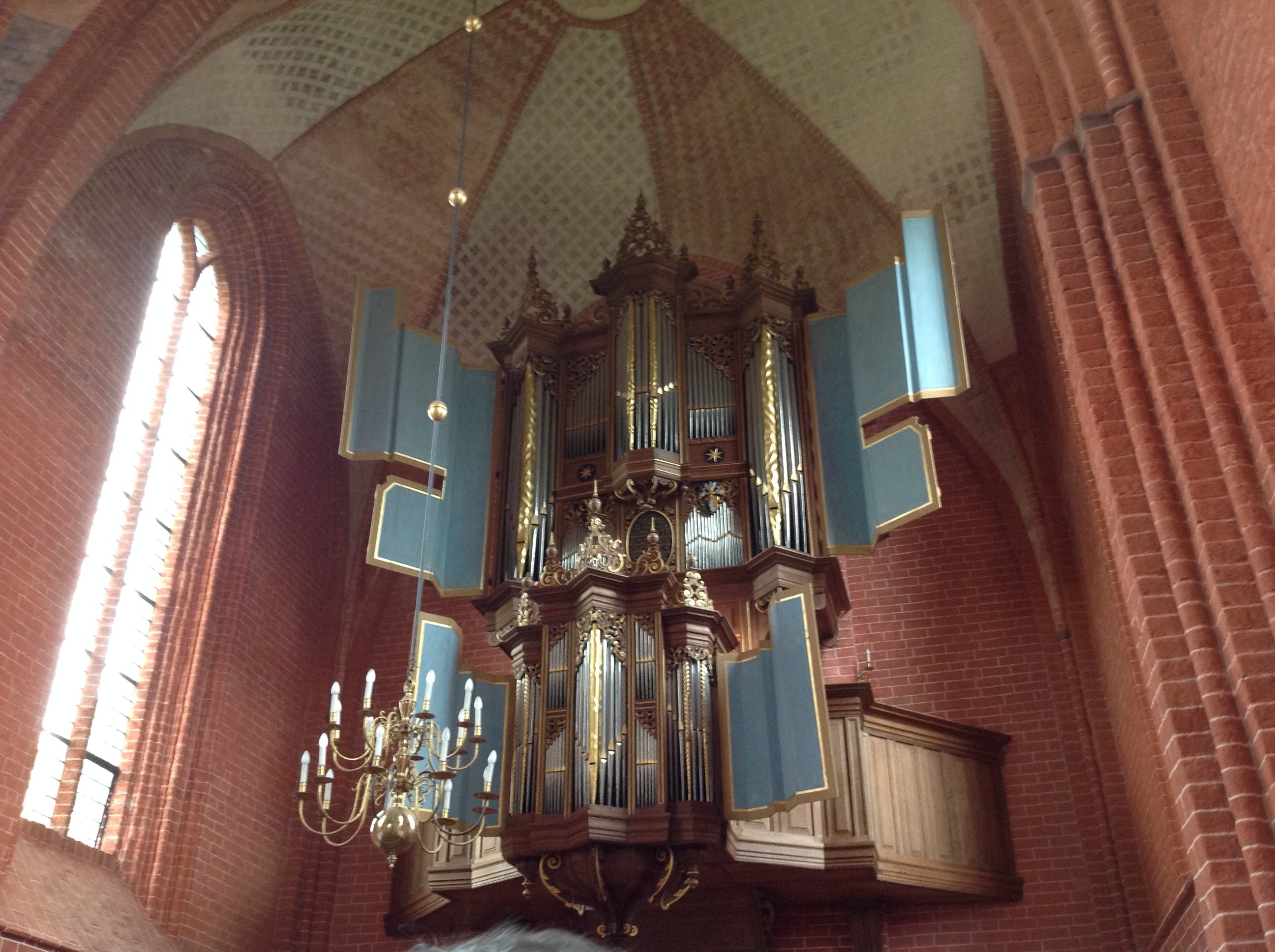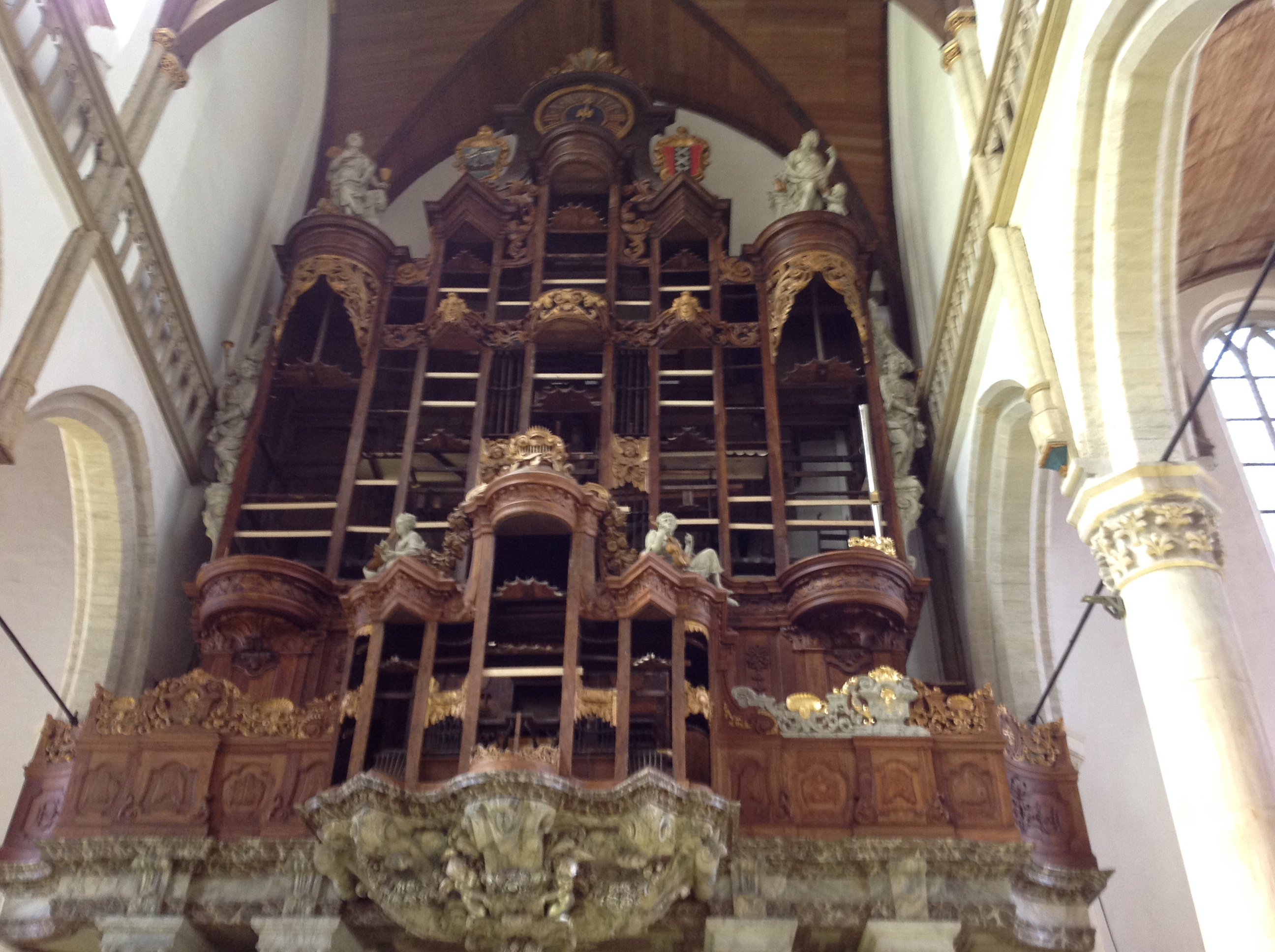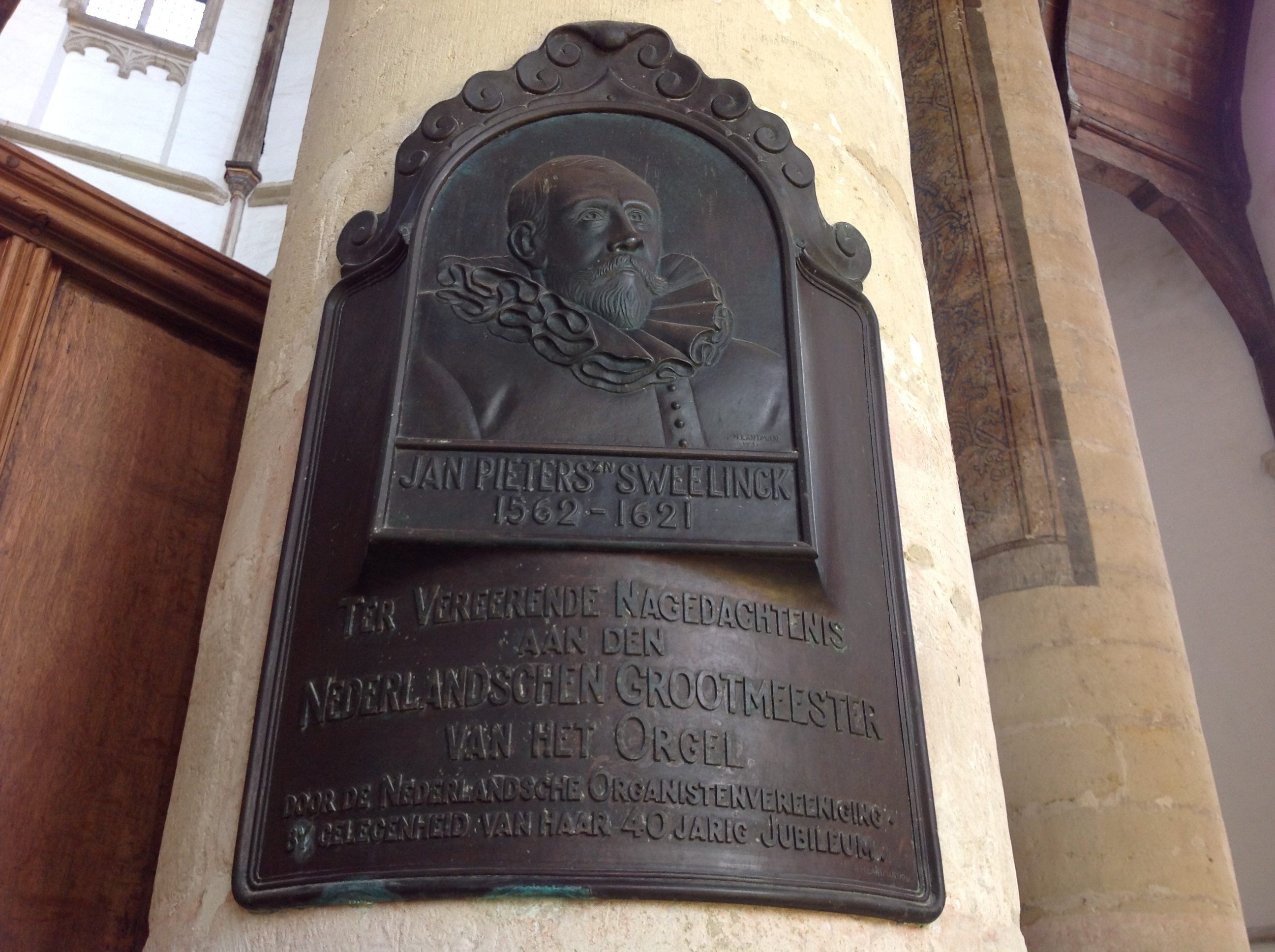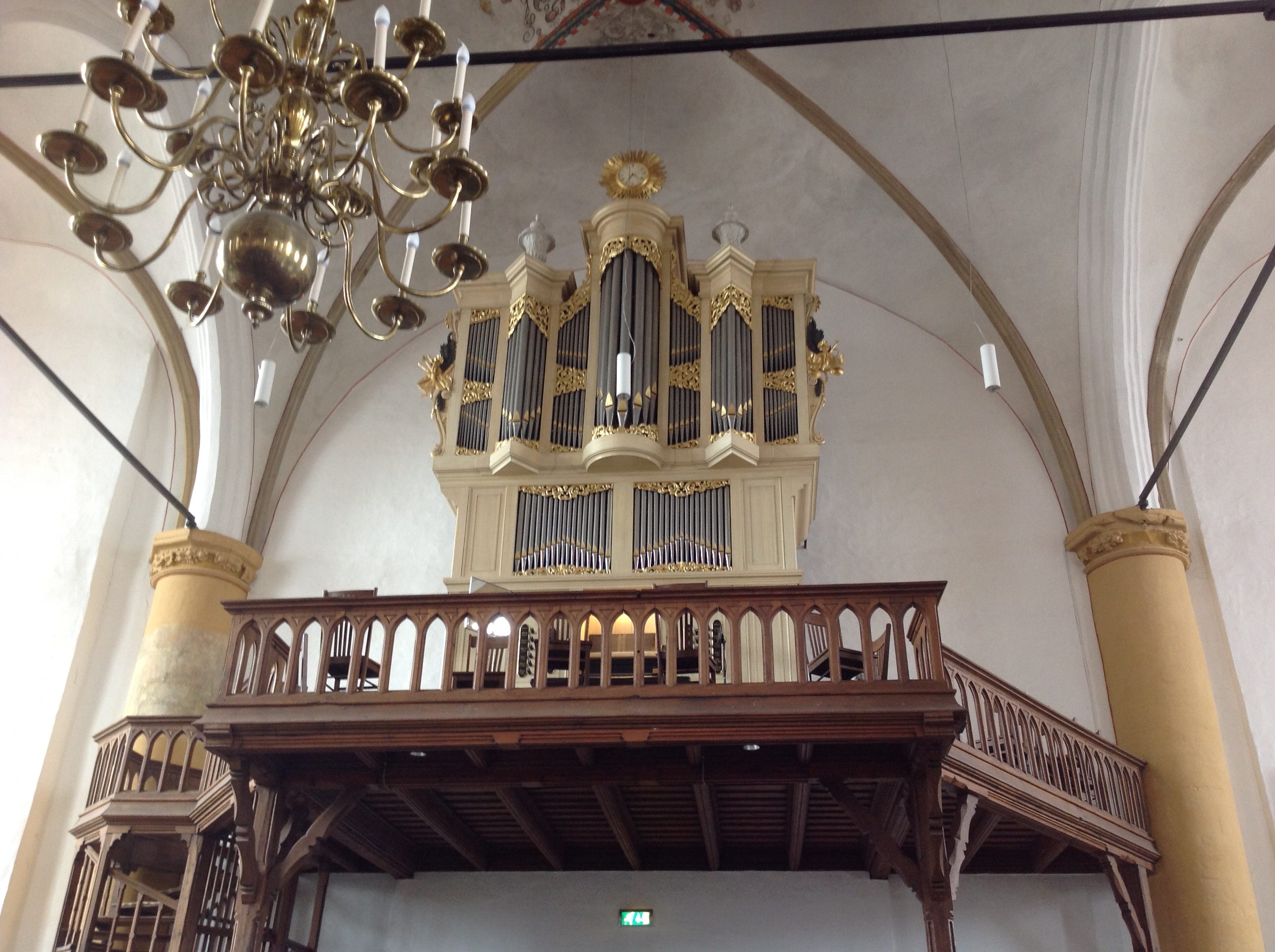Organs of Groningen, Holland
Having been too quiet a member of the Organ Club since joining a few years ago, the idea of a week long tour to hear, see and play wonderful, historic instruments by builders including Arp Schnitger, Hinsz, Müller and others in Groningen, was irresistable.
Fugue State Films’ excellent DVD, booklet and CD set published a few years ago, entitled ‘Pronkjuwelen in Stad en Ommeland‘ is the perfect introduction to these organs, and most of the organ demonstrations in this compilation are by Sietze de Vries, others by his teacher, Wim van Beek. The booklet is in Dutch, German and English, the DVD has English subtitles. Throughout our tour, Sietze spoke about and demonstrated each instrument. His improvisations mostly consisted of a set of variations on a chorale melody, sometimes an English hymn tune, including ‘Michael’ and ‘Praise to the Lord’, also known as ‘Lobet den Herrn’. A maximum of five minutes playing time with no prior practice was allocated to each player. Most of the fifteen players played repertoire but some, having been inspired, did improvise, and confidence increased in some as the week went by.
The tour began with visits to smaller organs in outlying villages. Jaws dropped every time at the tonal and visual beauty of each one, some of which included temperaments more wild than that of the Christ’s Chapel, Dulwich, organ. Pitches of these organs are a semitone sharp or more, pedal boards quite different to even the chapel’s narrow, straight pedal board. Some were very much wider than the Dulwich pedal board, and all pedal sharp and flat notes are smaller and differently shaped than those in the UK. Most players were not worried by pitch differences, whereas the perfect pitchers had to adjust their ears every time. Playing a chord of Bb, whilst hearing a chord of C, led to fingers shifting into C major playing shapes. Most players had to adjust to the older village/ small town organs’ compasses having short octaves. Pedal boards only went up to D, manual compasses stopped at C.
Larger organs had modern keyboard compasses, but no console had pistons, swell boxes, and very often the stops for the Rugpositief (Rückpostiv) were behind the player. Sietze selected suitable registrations for everyone, responding to requests for particular sonorities. Dutch stop names are easy enough to guess but the position of stops on many of these older organs made them hard to locate quickly.
Sietze described how village organists in the newly Reformed Churches of 500 years ago may have improvised every week, as they may not have been able to read music. The organist would have to play the chorale melody by ear, improvise harmonies, improvise variations to delight organist and listener if he was reasonably skilled. Repertoire, which is what most of us turn to every week for voluntaries, would hardly have been a priority. He also described the postion of organists in Holland today. Sounding similar to our own situations, professional organists can gain paid positions in top establishments, not always earning very much, whereas amateur organists often have to play for free. Sietze has just been appointed as one of the organists to the Martinikerk in Groningen but he will continue to work as a promoter of the organs in the province, both to teach and perform. His performances display commanding technical and musical certainty and confidence, His performance of the Prelude, Fugue and Chaconne in C ( BuxWV 136) and of the Klag-Lied ( BuxWV 76 ) were the best I have heard.
These are the churches visited: Day 1: Kantens- Antonius Kerk, Zandeweer-Dorpskerk, Krewerd-Dorpskerk. Day 2: Zeerrijp- Jacobuskerk, Uithizen -Jacobikerk, Leens- Petruskerk. Day 3: Noordbroeck- Hervormde Kerk, Zuidbroeck- Petruskerk, Oostwald- Hervormde Gemeente. Day 4: Harlingen- Grote of Nieuwe Kerk, Bolsward- Martinikerk, Leeuwarden- Grote of Jacobijnerkerk. Day 5: Groningen: Pelstergasthuiskerk, Lutheran Church (a substitue for Aa Kerk, which had become unavailable), Martinikerk. Day 6: Kampen – Buitenkerk, Bovenkerk.
Quite a few of these feature in the Fugue State Films package, described above, and they can also be found on You Tube.
On returning home, Norman and I had time to explore a little quarter of Amsterdam. Our first visit was to St Nicholas Roman Catholic Church, visible from Amsterdam Centraal railway station. A congregation was waiting for the Spanish Mass to start. No sign of an organist, despite a large organ in the west end gallery, but a small music group at the front was preparing to play.
Round the corner was Sweelinck’s church, the Oude Kerk. Now a museum, Oude Kerk houses art installations. We ascertained that the Müller organ is being restored and will be heard again. Sitting for an hour in this building in silence was memorable. One was able to contemplate colourful stained glass, intricate decorations on the wooden roof, and the thought of Sweelinck playing the organ.
Further away, the Niewe Kerk has been bought by a business. The organ is apparently used but when we tried to see it, access to the main part of the church was barred to non payers because of a large photography exhibition. It was just possible to see that organ case had been covered up. St Michael’s Church in Zwolle, home to one of Arp Schnitger’s finest organs, has also been taken over by big business and the organ, it seems, is silenced for the foreseeable future. How sad that visually and tonally beautiful musical instruments are no longer regarded by some as important or even valuable. After the experience of the churches in Groningen, the trend towards closing some protestant churches is a reflection of the current unsustainability of large churches once kept going by members. How interesting that it is the RC church that is plodding stalwartly on. The Stichting Groningen Orgelland (Foundation for Organs in Groningen) and the Arp Schnitger Gesellschaft work together to preserve and promote the instruments in this whole area, and are trying hard to make sure that valuable instruments are not lost forever. Schnitger organs are the equivalent of Stradivarius violins, and the Arp Schnitger Heritage Society is working towards the whole organ landscape becoming a UNESCO World Heritage Site.
Our last tour day in Kampen, not far from Amsterdam, it was a pleasant surprise to hear the Kampen Boys’ Choir sing an English Choral Evensong. They will be singing Evensong during the first week of August at Westminster Abbey and Southwark Cathedral this year. Their singing was excellent, so please go and listen. So, the tradition continues, and we have to be grateful for the efforts of organists like Sietze de Vries and his colleagues for their work promoting the organ and for keeping our cherished traditions going as well. I should add here that Sietze, accompanying the Evening Canticles, Noble in B minor, made the Kampen organ sound like an English Cathedral organ, despite the lack of playing aids and English tonal colours. He explained to Norman and me how he did it and the result was extremely good. The whole week was like being in Organ Heaven or Organ Fairyland and I will be seeking opportunities to go back and play them again!
To view more photos from the tour, please click here.
For further information about Sietze de Vries, visit his website www.sietzedevries.nl. The cv page only can be read in English, and everything else in Dutch. The additional photos of Groningen organs are stunning.
Thanks are due to the organisers of the Organ Club for their work in organising this spectacular tour.
Marilyn Harper







